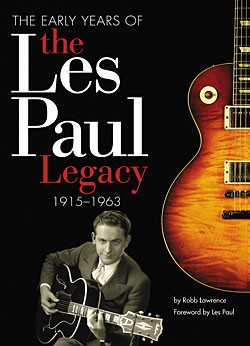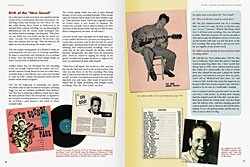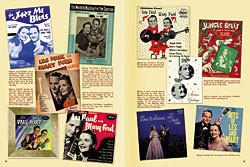
The Early Years of the Les Paul Legacy, 1915-1963
Les Paul is an acknowledged musical icon who influenced so much and many in his 92 years, yet he still has an amazing enthusiasm for the guitar. A new book, The Early Years of the Les Paul Legacy, 1915-1963 (see review in this month’s “Hit List”), adds yet another element to his amazing life and story, reminding all that he is much more than just a guy with his name on a really cool guitar.
The new book is impressive.
Well, it took a while! We actually started 20 years ago and as we went along there got to be more and more going in, so finally [author Robb Lawrence] decided to make it two books; the second is coming out in the fall. There are a lot of great photos of things like album covers, sheet music, and a few guitars, too!
For you, what stands out about that early period?
Just before World War II I felt I was playing my best, had command of the guitar, and really knew the instrument. Then during the war I was playing with all sorts of people, all the best – people like Benny Goodman, Nat Cole, Sinatra, Crosby… I witnessed the early versions of be-bop music when I used to jam in Harlem.
When the war was over, the soldiers came back and they had no music to dance to – just bebop, which you couldn’t really dance to. But the people wanted to dance and hold a partner! They wanted music with a beat. So I came along and was the opposite of be-bop, and it was the perfect thing to play. It had a melody and a dance beat.
At that time there were only two groups that made it big – Nat Cole and the Les Paul Trio. We concentrated on driving rhythm and memorable melody lines so people could dance. And that’s the band that joined Capitol Records, made multi-track records, and had lots of hits.

Many guitarists who grew up in the late 1960s and early ’70s were more familiar with Les Paul the guitar than a guy named Les Paul.
That’s correct, and I remember it well. I took a break. I did something foolish – I retired in 1964. I was having problems with arthritis in my hands, and I didn’t think I was playing as well. So I stopped for 10 years. In the early ’70s, Chet Atkins asked me to make a record. I said “Okay,” but then I had heart surgery and the doctor said the best thing to do was to get busy.
In the ’70s, guys like Steve Miller started talking about all the things you did, then you did the record with Chet, and we heard for ourselves what all the fuss was about.
Chet was about to work in A&R for a big record company, and I had already retired, so making the record was a big thing – like a final chance for us to work together. Then we won a Grammy award, I did gigs at a club on Broadway once a week!
These days, some players seem to switch allegiances from one guitar company to another. Did any company ever try to steal you away from Gibson?
Oh sure, they came and sat right here at my house and made offers. But I was always a Gibson player. Leo gave me a Fender guitar, but I never played it in public. And there were plenty of others, too. But when I worked out my deal with [Gibson president Maurice] Berlin way back more than 50 years ago, I felt I was making the right decision, and I’ve always liked the design of that guitar and how it plays. So my name is still on it.
Was there anyone you wanted to record with but were never able to?
There were a lot of great players I would have loved to played with – Django, Wes Montgomery, and many others. And some modern guys, as well. In fact, I will be making an album with some great guitar players that’s little different from [Les Paul & Friends]. I will be producing and it’ll have the top players from over the years. Really the cream of the crop, all Grammy musicians.

Public television has been airing the documentary “Les Paul: Chasing Sound.” Do you think it captured the flavor of Les Paul?
I hope so. It’s pretty good. A person looks back and he’s amused to hear how he played when he started, and the imprints that never leave you and make you recognizable from the others. And you hear how you matured over time and what that means to your playing.
Starting from when I was Rhubarb Red, I thought there was some pretty good playing on there. I was still developing. But I thought the thing was well done.
Are you still having fun with your gig at the Iridium in New York?
We have a lot of fun, and I look forward to it every week. But it can be frustrating when you can’t play what you hear and play like you used to do. I can’t play a C or F chord, so I play around that. I make an arpeggio or something else you can play – use your head instead of your hands!
Is that the secret to a long life?
(laughs) Yes! Use your head. Your mind is a muscle!
You’re known for a lot of things, but is there one that you especially want people to remember you for?
Just that I tried to do the best I could. I tried to adjust to please the fans. Many artists say “We are here to teach the people and educate them to good music.” I say give the people what they wish to hear. Both of those are good things, but I always like to give the people what they want to hear.
This article originally appeared in VG‘s February 2009 issue. All copyrights are by the author and Vintage Guitar magazine. Unauthorized replication or use is strictly prohibited.
Les Paul & Mary Ford Show: World Is Waiting For The Sunrise



